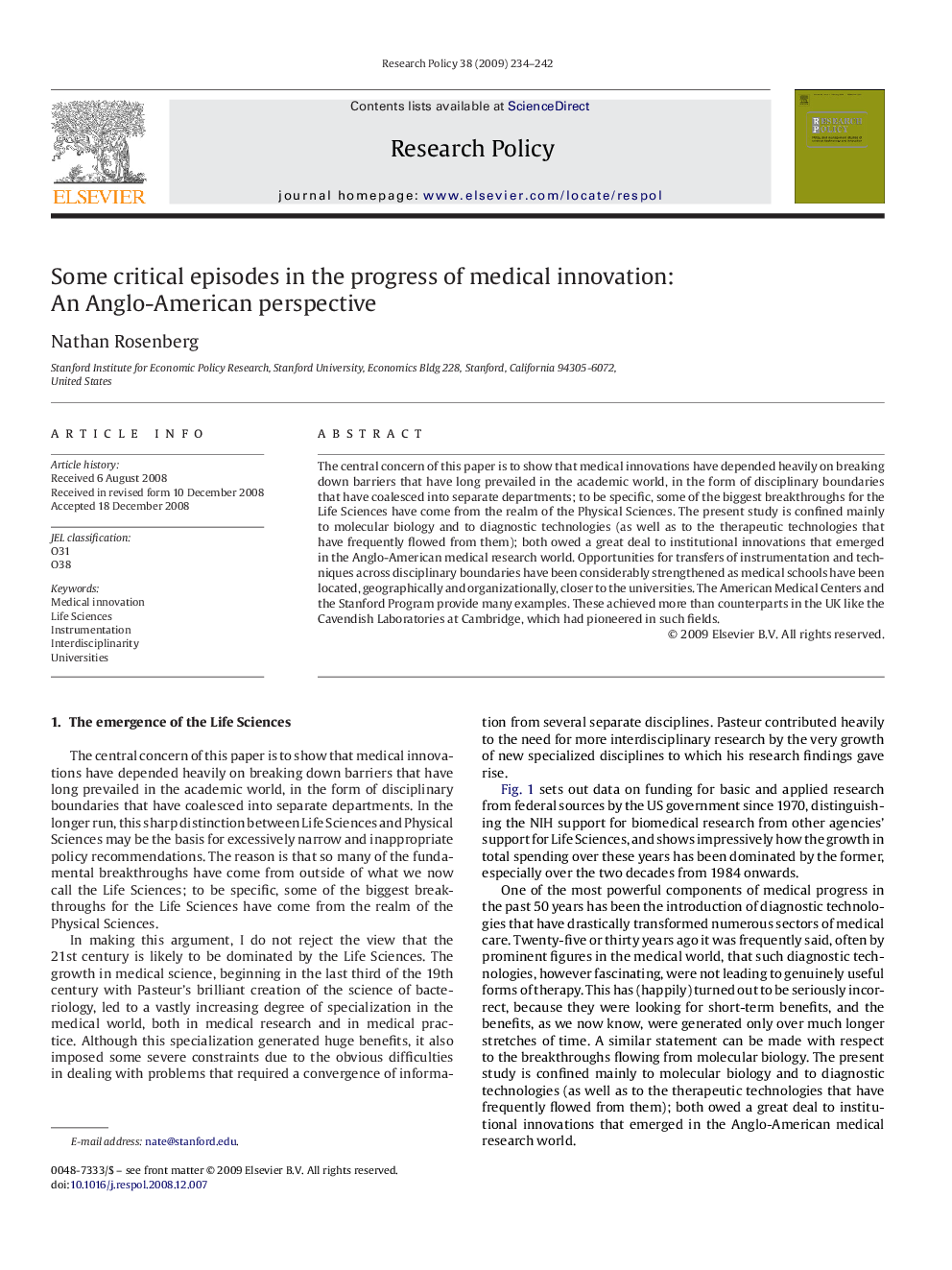| Article ID | Journal | Published Year | Pages | File Type |
|---|---|---|---|---|
| 985351 | Research Policy | 2009 | 9 Pages |
The central concern of this paper is to show that medical innovations have depended heavily on breaking down barriers that have long prevailed in the academic world, in the form of disciplinary boundaries that have coalesced into separate departments; to be specific, some of the biggest breakthroughs for the Life Sciences have come from the realm of the Physical Sciences. The present study is confined mainly to molecular biology and to diagnostic technologies (as well as to the therapeutic technologies that have frequently flowed from them); both owed a great deal to institutional innovations that emerged in the Anglo-American medical research world. Opportunities for transfers of instrumentation and techniques across disciplinary boundaries have been considerably strengthened as medical schools have been located, geographically and organizationally, closer to the universities. The American Medical Centers and the Stanford Program provide many examples. These achieved more than counterparts in the UK like the Cavendish Laboratories at Cambridge, which had pioneered in such fields.
